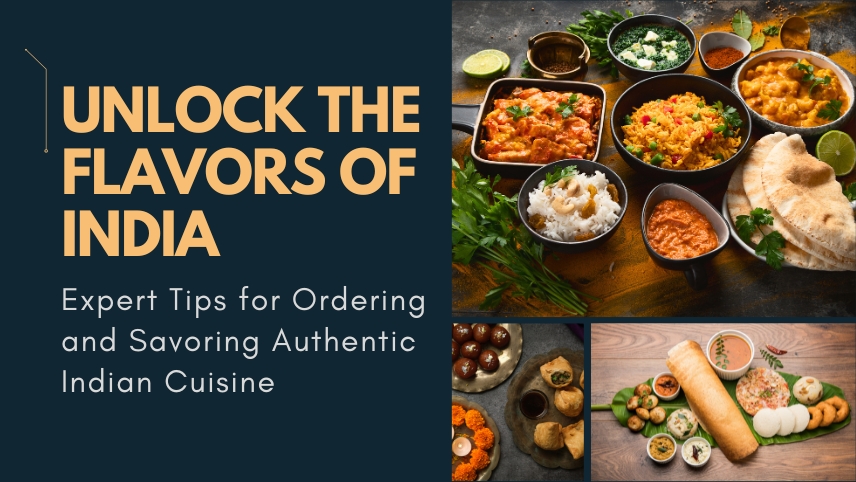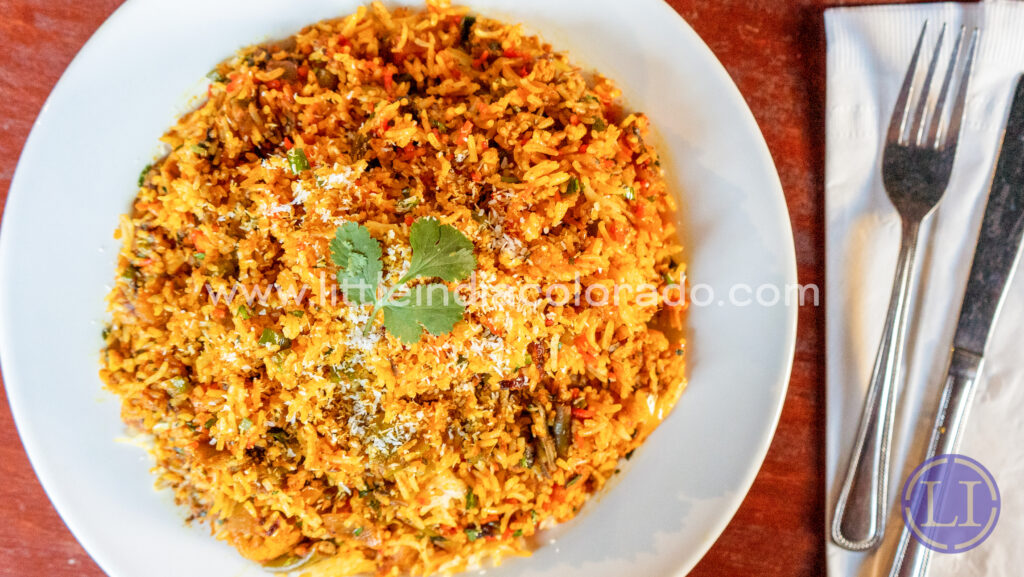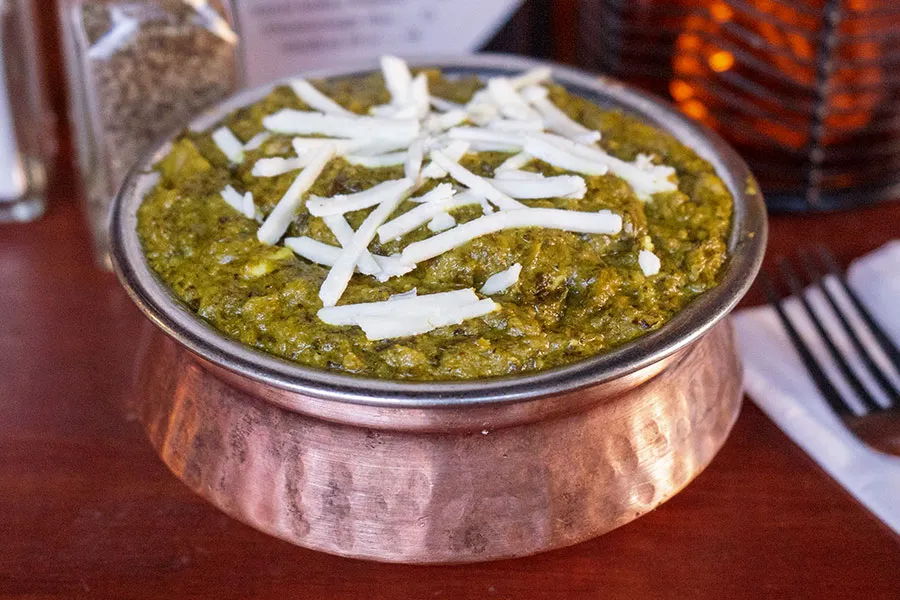
Unlocking the Flavors of India: Expert Tips for Ordering and Savoring Authentic Indian Cuisine
Welcome to a culinary journey through the vibrant and diverse flavors of India! If you’re a food enthusiast who craves aromatic spices, rich curries, and mouthwatering delicacies that define Indian cuisine, then you’ve come to the right place. In this guide, we’ll unveil the secrets to ordering and savoring authentic Indian dishes like a true connoisseur. Whether you’re a novice exploring Indian flavors for the first time or a seasoned foodie looking to enhance your dining experience, these expert tips will help you navigate the vast array of options and make the most of your culinary adventure.
From understanding the intricacies of Indian spices to decoding the menu at your local Indian restaurant, we’ll provide you with the knowledge and confidence to order with ease and fully immerse yourself in the culinary delights of this fascinating cuisine. So, get ready to tantalize your taste buds and embark on a gastronomic exploration of the flavors that make India a true food lover’s paradise.
1. Unlock the Flavors of India; Understanding the basics of Indian flavors and spices
Indian cuisine is renowned for its rich and diverse flavors, achieved through carefully combining various spices and ingredients. Here are some key aspects to help you understand the basics of Indian flavors and spices:
Spices:
Spices play a central role in Indian cooking. They add depth, complexity, and distinctiveness to dishes. Some commonly used spices in Indian cuisine include:
Turmeric: Known for its vibrant yellow color, turmeric adds warmth and a slightly bitter flavor.
Cumin: Provides a warm and earthy flavor with a hint of citrus.
Coriander: Offers a somewhat citrusy and nutty flavor.
Cardamom: Comes in two varieties – green and black. It has a unique, aromatic, and slightly sweet taste.
Cloves: Intensely aromatic with a strong, slightly sweet taste.
Cinnamon: Adds a sweet and woody flavor to dishes.
Chili Peppers: Used for heat and spice, various types of chili peppers are employed in different regions.
Mustard Seeds: These seeds can be black, brown, or white, providing a nutty and slightly pungent taste.
Fenugreek: Offers a slightly bitter and nutty flavor.
Ginger and Garlic: Fresh or ground add pungency and depth to many dishes.
Flavor Profiles:
Indian cuisine often balances six primary tastes: sweet, sour, salty, bitter, astringent, and spicy. The combination of spices creates layers of flavors that may include:
Masala: This term refers to a blend of spices that can be used in various forms, such as garam masala (a warming spice blend) and chaat masala (a tangy and spicy blend).
Curry: Often associated with a combination of spices, the term “curry” is quite broad and can refer to various dishes with different spice profiles.
Regional Variations:
India’s diverse geography and cultures have given rise to various regional cuisines. Each region has its own unique spice blends and signature dishes. For instance:
North Indian: Known for dishes like butter chicken, biryani, and tandoori, with flavors often rich and creamy.
South Indian: Famous for dosas, idlis, and sambar, with flavors often being more tangy and coconut-based.
East Indian: Fish and rice are staples, and mustard oil is a common cooking medium.
West Indian: Goa and Maharashtra Dishes often feature intense coconut, tamarind, and seafood flavors.
Aromatics and Herbs:
Along with spices, aromatic ingredients like onions, tomatoes, and herbs like cilantro (coriander leaves) and mint are essential to Indian cooking, providing freshness and balance to dishes.
Cooking Techniques: Indian cuisine utilizes various cooking methods, including frying, sautéing, roasting, grilling (tandoori), and slow cooking (dum-style).
Balance and Harmony: Indian cooking seeks to balance flavors, textures, and temperatures in a single meal.
Remember that the world of Indian flavors and spices is vast, and this overview provides only a glimpse of its complexity. Exploring different dishes and experimenting with various spice combinations will give you a deeper understanding of the intricacies of Indian cuisine.
2. Regional variations in Indian cuisine
Indian cuisine is incredibly diverse, with a wide range of regional variations that reflect the country’s rich cultural, geographical, and climatic diversity. Each region has its own unique ingredients, cooking techniques, and flavors. Here are some of the prominent regional cuisines in India:
North Indian Cuisine:
- Known for its rich and flavorful dishes.
- Common ingredients include dairy products like ghee (clarified butter), paneer (Indian cottage cheese), and yogurt.
- Popular dishes: Biryani, butter chicken, tandoori meats, naan, and various lentil-based dishes like dal makhani.
South Indian Cuisine:
- It emphasizes rice as a staple and uses coconut, curry leaves, and tamarind for flavor.
- Dishes like dosas (thin fermented crepes), idlis (steamed rice cakes), and sambars (lentil-based vegetable stew) are iconic.
- Coconut-based chutneys and spicy pickles are common accompaniments.
East Indian Cuisine:
- Fish and rice are central to many dishes due to the region’s proximity to water bodies.
- Mustard oil is a common cooking medium.
- Dishes like macher jhol (fish stew), panta bhat (fermented rice), and Sandesh (a sweet made from cottage cheese) are popular.
West Indian Cuisine:
- Flavors often include coconut, seafood, and tangy elements.
- Goa, a former Portuguese colony, has a distinct cuisine influenced by European and local flavors.
- Vada pav (spicy potato fritter sandwich) from Mumbai and dhokla (steamed fermented chickpea flour) from Gujarat are well-known.
Northeast Indian Cuisine:
- Unique ingredients like bamboo shoots, fermented foods, and various herbs are prominent.
- Dishes from states like Manipur, Nagaland, and Assam offer a unique culinary experience.
Central Indian Cuisine:
- Known for its spicy and hearty dishes.
- Madhya Pradesh and Chhattisgarh offer dishes like poha (flattened rice) and chana masala (spiced chickpeas).
Rajasthani Cuisine:
- Due to the arid climate, this cuisine features a variety of lentils, gram flour, and dried ingredients.
- Dishes like dal baati churma (lentil curry with baked wheat balls) and gatte ki sabzi (gram flour dumplings in curry) are famous.
Punjabi Cuisine:
- Known for its robust and rich flavors.
- Tandoori cooking and the use of dairy products are prominent.
- Dishes like sarson da saag (mustard greens) with makki di roti (cornmeal flatbread) and rajma chawal (red kidney beans with rice) are popular.
Kashmiri Cuisine:
- The use of dried fruits, saffron, and yogurt is common.
- The wazwan feast, with dishes like rogan josh (spiced meat curry) and dum aloo (stuffed potatoes), is a highlight.
Hyderabadi Cuisine:
- Influenced by Mughal and Persian cuisines, known for biryanis and kebabs.
- Haleem (meat and wheat stew) and mirchi ka salan (chili pepper curry) are notable dishes.
These descriptions only scratch the surface of the incredible variety within Indian cuisine. Each region’s culinary traditions are influenced by history, culture, available ingredients, and local preferences, resulting in a rich tapestry of flavors and dishes.
3. Popular Indian dishes and their unique flavors
Indian cuisine is renowned for its plethora of delicious and diverse dishes, each with unique flavors. Here are some popular Indian dishes along with their distinctive flavor profiles:
1. Biryani:
- A fragrant rice dish cooked with aromatic spices and herbs.
- Flavors: Saffron, cardamom, cloves, cinnamon, nutmeg, and bay leaves create a rich and complex taste.
- Variations: Vegetable, chicken, mutton, and seafood biryanis are common.
2. Paneer Tikka:
- Chunks of marinated paneer (Indian cottage cheese) grilled or roasted.
- Flavors: Tangy from yogurt and lemon, with a burst of spices like cumin, coriander, and red chili.
3. Chole Bhature:
- Spiced chickpea curry served with deep-fried bread (bhature).
- Flavors: Tangy from tomatoes and tamarind and rich with spices like cumin, coriander, and garam masala.
4. Masala Dosa:
- Crispy fermented crepe (dosa) stuffed with spiced potato filling.
- Flavors: Earthy from the dosa batter, tangy from chutneys, and a hint of heat from the potato masala.
5. Rogan Josh:
- Slow-cooked aromatic meat curry, often made with lamb.
- Flavors: Rich with the depth of spices like cardamom, cinnamon, cloves, and the warmth of Kashmiri red chili.
6. Palak (Saag) Paneer:
- Cottage cheese in a creamy spinach sauce.
- Flavors: Earthy spinach, mild creaminess, and spices like cumin, garam masala, and fenugreek.
7. Dhokla:
- Steamed fermented chickpea flour cakes, often served as a snack.
- Flavors: Light and tangy, with a hint of sweetness from the tempering of mustard seeds and curry leaves.
8. Vindaloo:
- A spicy and tangy curry, typically made with pork or chicken.
- Flavors: Intense heat from red chilies, balanced by the tanginess of vinegar and tamarind.
9. Pani Puri (Golgappa):
- Hollow, crispy puris filled with spicy tamarind water, potatoes, and chickpeas.
- Flavors: Every bite has a burst of tangy, sweet, and spicy flavors.
10. Rasgulla:
- Spongy milk dumplings soaked in sugar syrup, a popular dessert.
- Flavors: Delicate sweetness with a hint of cardamom.
11. Tandoori Chicken:
- Chicken marinated in yogurt and spices, cooked in a tandoor (clay oven).
- Flavors: Smoky and charred with a blend of spices and tanginess from yogurt.
12. Pav Bhaji:
- Spiced vegetable curry served with soft bread rolls (pav).
- Flavors: Tangy and buttery, with a medley of vegetables and spices.
These dishes offer just a glimpse of the diverse and vibrant flavors present in Indian cuisine. The intricate use of spices, herbs, and cooking techniques contributes to the complexity and richness that make Indian food so beloved worldwide.
4. Tips for ordering authentic Indian food at restaurants
Ordering authentic Indian food at restaurants can be an enjoyable and flavorful experience. Here are some tips to help you make the most of your dining experience and ensure you’re getting authentic and delicious Indian dishes:
Research the Menu: Take a look at the menu online or at the restaurant before you go. Familiarize yourself with Indian dishes and their descriptions to have an idea of what you might like to try.
Ask for Recommendations: Don’t hesitate to ask the waitstaff for recommendations based on your preferences. They can guide you to popular or authentic dishes that suit your taste.
Start with Classics: If you’re new to Indian cuisine, consider starting with classic dishes that are popular and well-loved, such as butter chicken, chicken tikka masala, paneer tikka, or biryani.
Inquire About Spice Levels: Indian cuisine ranges from mild to spicy. If you’re sensitive to spice, ask the waiter about the spice level of the dishes you’re interested in and request adjustments if necessary.
Try Regional Specialties: Many Indian restaurants offer dishes from specific regions. Explore regional specialties to get a taste of the diverse flavors across India.
Share and Try Multiple Dishes: Indian meals are often served family-style, with several dishes to share. Consider ordering various dishes to experience a range of flavors and textures.
Ask About Preparation Methods: If you’re curious about how a particular dish is prepared, feel free to ask. Learning about cooking techniques and ingredients can enhance your appreciation of the food.
Explore Vegetarian Options: Indian cuisine offers a wide range of vegetarian dishes that are flavorful and satisfying. Don’t hesitate to explore this aspect of the menu.
Pair with Appropriate Sides: Many Indian dishes are served with sides like naan (bread), rice, chutneys, and yogurt-based sauces. Pairing the right sides can complement and balance the flavors.
Respect Cultural Norms: Some Indian restaurants may have specific customs or etiquette. For example, it’s common to eat with your hands in certain Indian dishes. If you’re unsure, observe what others are doing or ask the staff for guidance.
Be Open to New Flavors: Indian cuisine may introduce you to new and unique flavors. Approach the experience with an open mind and be willing to try something different.
Give Feedback: If you enjoy a particular dish, don’t hesitate to let the restaurant know. Providing positive feedback can encourage them to continue offering authentic and delicious options.
Remember that authentic Indian cuisine varies greatly by region and can encompass a wide range of flavors, ingredients, and techniques. Exploring different dishes and being open to new tastes is key to fully appreciating the richness of Indian food.
5. Etiquette for eating Indian food
Eating Indian food comes with its own set of cultural norms and etiquette. Here are some tips to help you enjoy your Indian meal while respecting the traditions and customs associated with it:
Wash Hands Before and After: In many Indian cultures, it’s customary to wash your hands thoroughly before and after eating. This is especially true if you’re eating with your hands.
Eating with Hands: It’s common to eat certain Indian dishes with your hands, such as roti (bread) and rice. Use your right hand to scoop up food, as the left hand is traditionally considered unclean. Wash your hands before and after.
Use Utensils When Necessary: While many Indian dishes are enjoyed with hands, some might be easier to eat with utensils, especially if you’re not accustomed to eating with your hands. Feel free to use a fork and spoon if you prefer.
Sharing is Caring: Indian meals are often communal, with dishes placed in the center of the table for everyone to share. Take a portion of what you want onto your plate and pass the dishes along to others.
Serve Others First: If you’re dining with others, it’s considered polite to serve them before you serve yourself. This is a sign of respect and consideration.
Start with a Small Amount: Indian cuisine can be quite flavorful and sometimes spicy. Start with small portions of different dishes to gauge your taste preferences before helping yourself to larger portions.
Mixing Flavors: Mixing different flavors, like combining rice with curries and chutneys, is a common practice in Indian dining. Don’t be afraid to experiment and explore various combinations.
Use Condiments Wisely: Indian meals often come with condiments like chutneys, pickles, and yogurt sauces. These can enhance the flavors of your dishes, but use them sparingly to avoid overwhelming your palate.
Break Bread Mindfully: If you’re tearing off a piece of bread (roti, naan) to scoop up food, use one hand to tear and the other to hold the piece you’re eating from. Avoid using the same hand for both actions.
Finish What You Take: Indian culture places importance on not wasting food. Take a portion you can comfortably finish, and you can always take more if needed.
Stay Hydrated: Indian cuisine can be spicy, and it’s common to have water or beverages like lassi (yogurt drink) to help balance the flavors.
Offer and Accept Food Politely: If someone offers you food or suggests a dish, it’s polite to accept graciously, even if you’re not sure you’ll like it. Similarly, offer food to others with an open and friendly demeanor.
Use Your Right Hand for Interaction: If you need to pass something to someone or receive something, use your right hand as a sign of respect.
Be Respectful of Cultural Practices: If you’re dining with hosts from a particular region, try to learn about their specific customs and practices to show appreciation for their culture.
By following these etiquette tips, you’ll not only enjoy your Indian meal to the fullest but also show respect for the traditions and customs associated with this vibrant cuisine.
6. Pairing Indian food with beverages
Pairing beverages with Indian food can enhance your dining experience by complementing and balancing the flavors of the dishes. Here are some beverage options to consider when enjoying Indian cuisine:
1. Lassi: A traditional Indian yogurt-based drink that comes in sweet or savory variations. A sweet lassi (mango, rose, or plain) can help cool down spicy dishes, while a savory lassi (salted) complements rich and heavy foods.
2. Chai: Indian spiced tea made with black tea leaves, milk, and a blend of spices like cardamom, cinnamon, and ginger. Chai pairs well with sweet desserts and snacks like samosas.
3. Coconut Water: A refreshing and hydrating option that goes well with spicy and rich dishes, offering a light and tropical contrast.
4. Nimbu Pani: A tangy and refreshing lemonade infused with spices like cumin and black salt. It’s a great choice to balance the flavors of Indian street food.
5. Buttermilk: A cooling and probiotic drink that can help soothe the palate after a spicy meal. It’s commonly enjoyed with rice-based dishes.
6. Herbal Infusions: Mint or ginger herbal infusions can cleanse the palate and provide relief from heat and spices.
7. Beer: A cold beer, whether local or imported, can be a good match for spicy and fried Indian snacks, as well as hearty curries.
8. Wine: Opt for wines with moderate acidity and fruitiness, like Riesling or Gewürztraminer, to complement the diverse flavors of Indian dishes. Red wines like Shiraz or Zinfandel can pair well with richer meat-based curries.
9. Sparkling Water: A non-alcoholic option to cleanse the palate and refresh between bites.
10. Fruit Juices: Fresh fruit juices like mango, pomegranate, or pineapple can provide a sweet and tangy contrast to spicy and savory flavors.
11. Non-Alcoholic Cocktails: Consider mocktails made with fruit juices, soda, and a touch of herbs or spices.
12. Water: Plain water is always a reliable choice to cleanse the palate and stay hydrated, especially with spicy foods.
When pairing beverages with Indian food, consider the intensity of flavors, spices, and the overall dining experience. Experiment with different combinations to find what you personally enjoy and what best complements the specific dishes you’re savoring.
Conclusion: Embrace the rich flavors of Indian cuisine
Embracing the rich flavors of Indian cuisine is a journey of culinary exploration that promises a delightful and memorable experience. With its diverse array of aromatic spices, vibrant ingredients, and time-honored cooking techniques, Indian food offers a symphony of tastes that captivates the senses and transports you to a world of culinary delight.
From the aromatic biryanis and delicate dosas to the hearty curries and mouthwatering sweets, each dish tells a story of tradition, culture, and creativity. Whether you’re savoring the tangy notes of chutneys, the warming embrace of spices like cardamom and cumin, or the comforting creaminess of lentil-based curries, Indian cuisine offers a spectrum of flavors that cater to every palate.
As you journey through the vast landscape of Indian dishes, you’ll discover the intricate balance between sweet, sour, salty, bitter, astringent, and spicy tastes that Indian cooks skillfully orchestrate. You’ll experience the joy of sharing communal meals, the pleasure of trying new ingredients, and the satisfaction of finding your personal favorites.
So, whether you’re sipping a fragrant cup of chai, savoring the crunch of a samosa, or relishing the layers of a perfectly spiced curry, let yourself be immersed in the magic of Indian cuisine. Embrace its authenticity, appreciate its nuances, and allow the symphony of flavors to transport you on a culinary adventure that transcends borders and celebrates the art of food in all its splendor.





